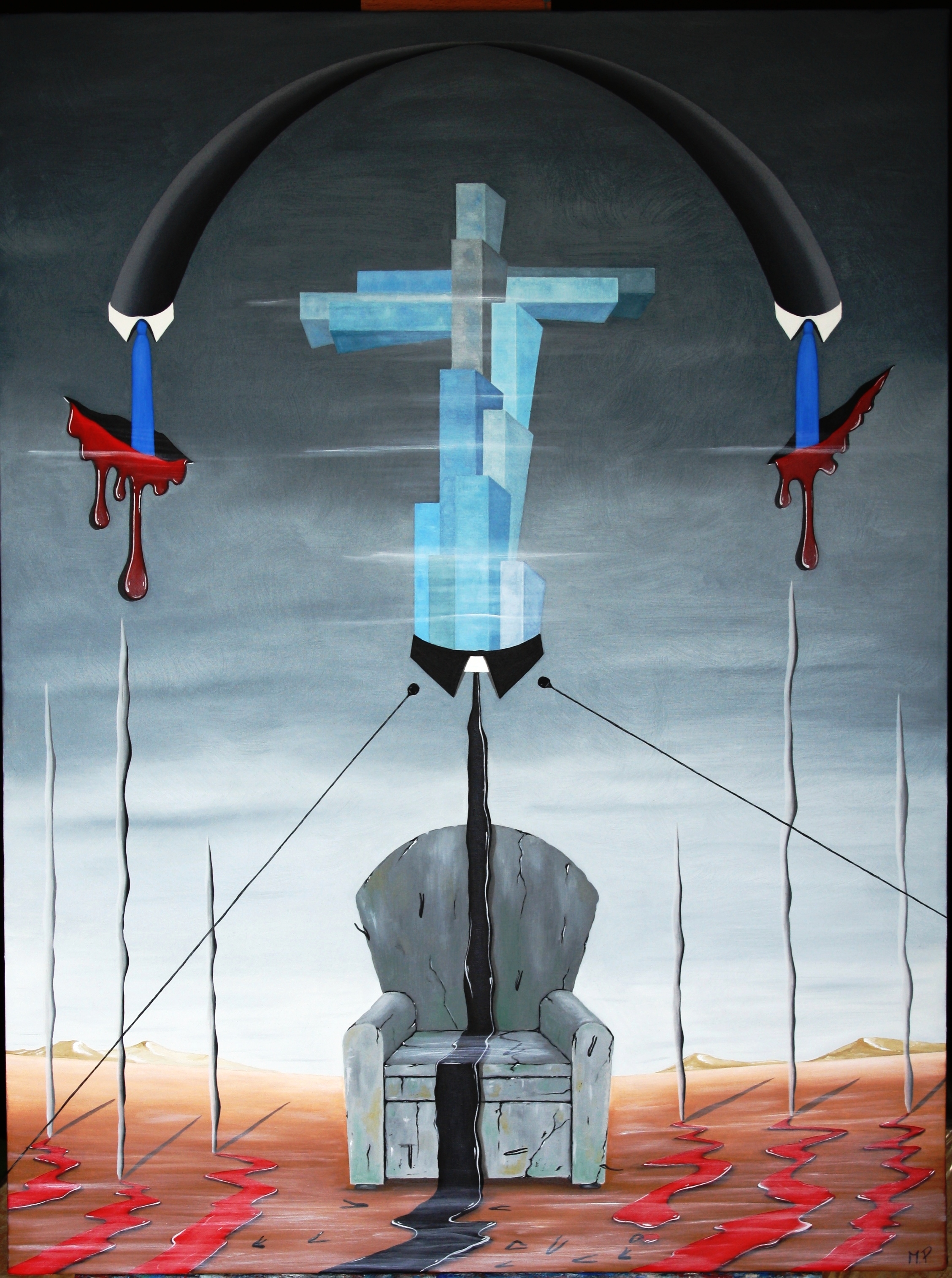
Tirannia del progresso
Al centro della composizione, un trono lapideo, minacciato da sanguisughe fameliche, campeggia in un deserto solcato da rivoli di sangue, che sgorgano serpeggianti e minacciosi avanzando verso l’osservatore.
Dalla terra “insanguinata” esalano fumi tossici.
In alto, come vessillo del progresso, svetta una croce di grattanuvole, strumento di martirio contemporaneo, ai suoi lati due “colletti bianchi” fungono da piedritti ad una arcata di fumi.
Un cielo grigio e fosco funge da sfondo di una campata che inquadra la cattedra inondata da una “colata nera”, scaturita dal colletto sacerdotale centrale.
L’Autore intende mettere in luce la decadenza morale e coscienziale in cui è precipitata la civiltà contemporanea, in nome di un progresso che segna profondamente ogni aspetto dell’esistenza, ferita gravemente dai “white collars”.
Due microfoni, simboli dell’informazione, divulgano le conquiste della rivoluzione del benessere, “offuscando” l’evidenza dei disastri sociali.
L’iconologia del sangue rimanda, senza troppa retorica stilistico-estetica e formale, allo sfruttamento indiscriminato del creato.
Tyranny of progress
At the center of the composition, a stone throne, threatened by hungry leeches, stands in a desert crossed by streams of blood that flow meandering and menacing moving toward the observer.
From the land “bloody” exhale toxic fumes.
At the top, as a sign of progress, stands a cross of skyscrapers, contemporary instrument of martyrdom, its sides are two “white collar” serve as abutments to an arch of smoke.
A gray and gloomy sky serves as the backdrop of a span that frames the desk flooded with a “casting black”, triggered by the central priestly collar.
The author wishes to highlight the decadence and moral conscience that has plunged the modern civilization, in the name of progress, which deeply marks every aspect of life, seriously injured by the “white collar”.
Two microphones, information symbols, disseminate the achievements of the wellness revolution, “blurring” the evidence of social disasters.
The iconography of the blood found in, without too much rhetoric and stylistic-aesthetic and formal, the indiscriminate exploitation of creation.
Opera presentata alla IV edizione della mostra d’ arte contemporanea Vuotociclo “Sankta Sango”
Castel dell’Ovo-Napoli
dal 25 ottobre al 10 novembre 2013
Link della mostra https://www.youtube.com/watch?v=uPp53zitbrA
